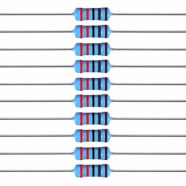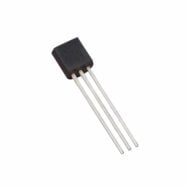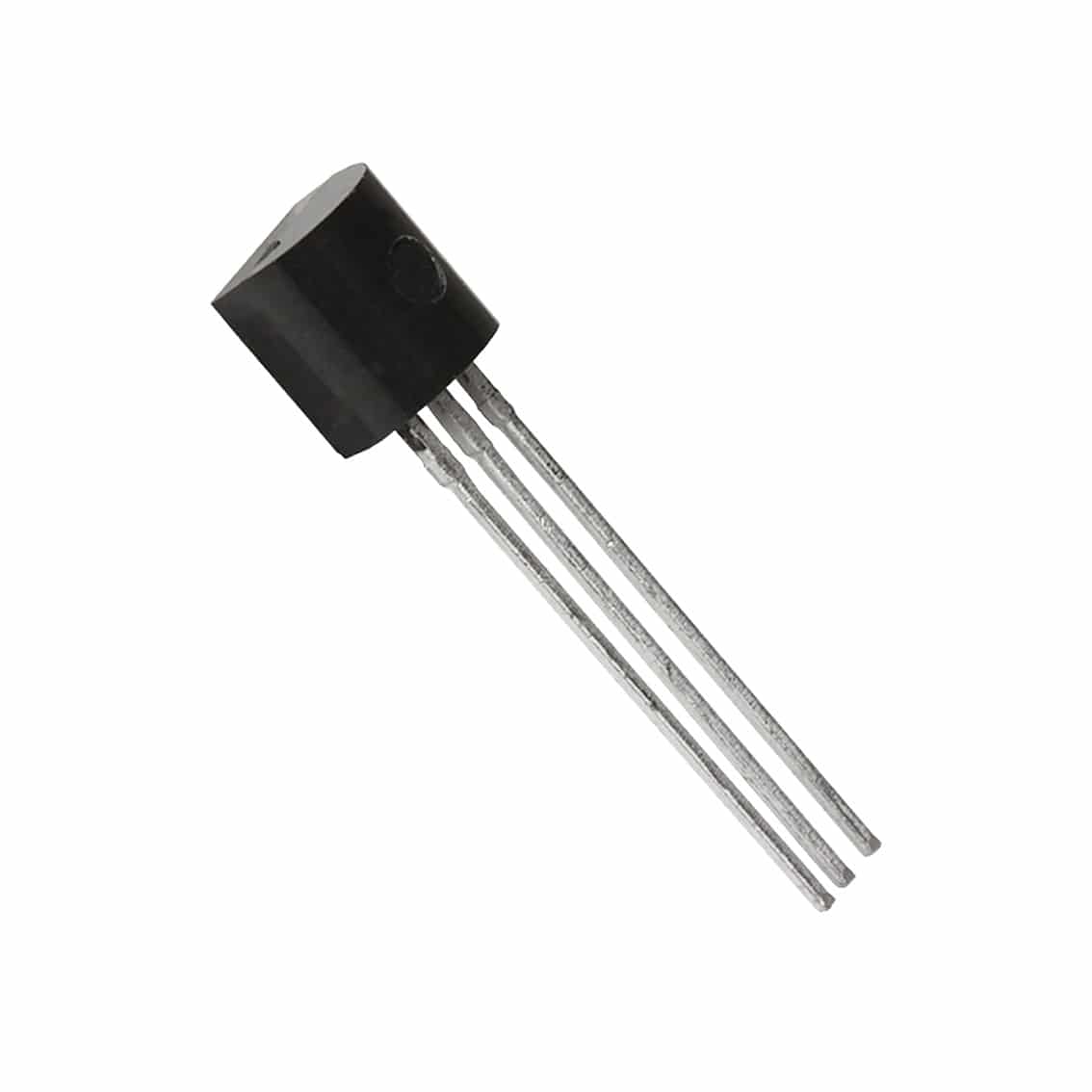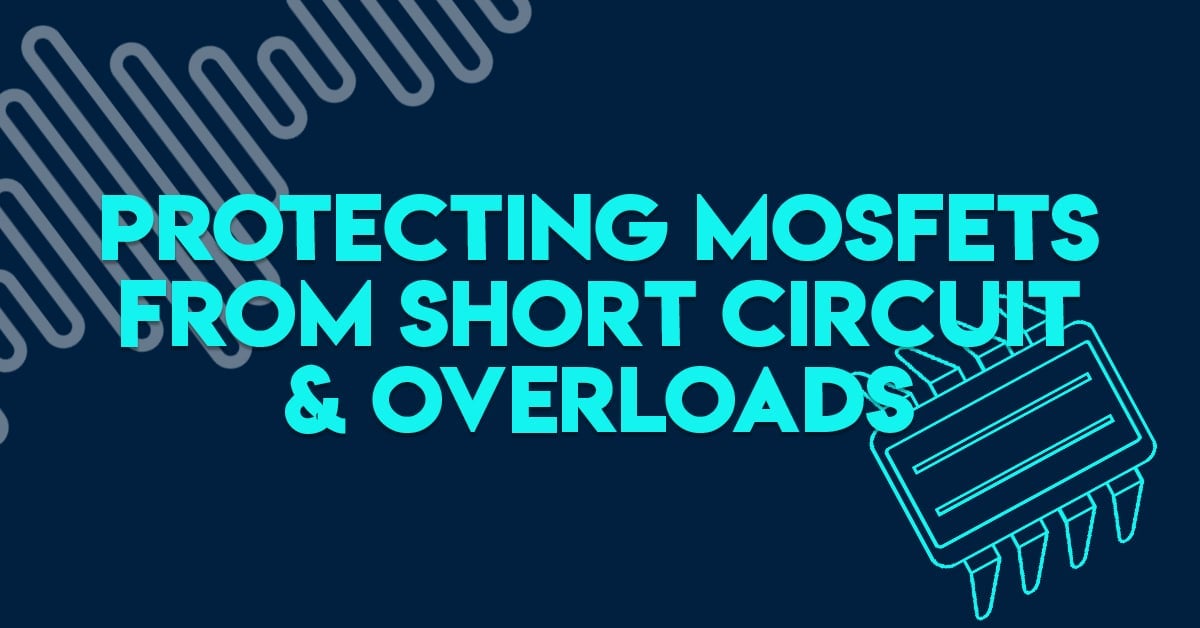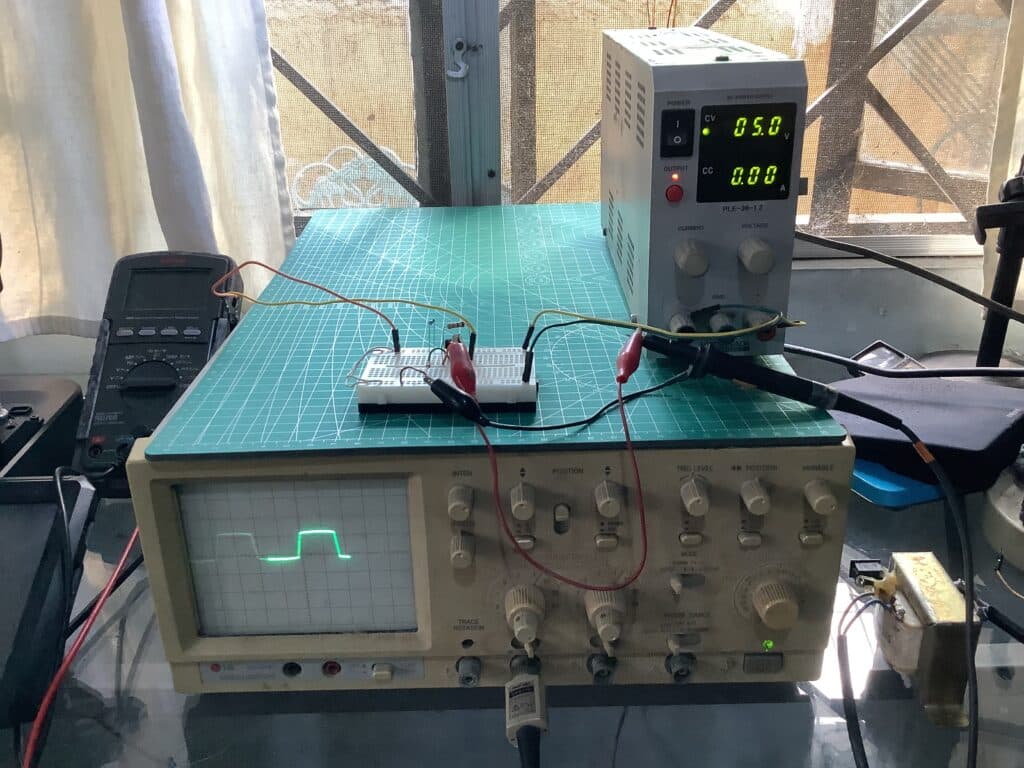
This article illustrates how a simple transistor circuit can act as an ADC input protection circuit from overdrive conditions while also safeguarding your voltage supply rails.
Introduction
One of the common scenarios in using an Analog-to-Digital Converter is adding an ADC input protection circuit. This case is especially true if you’re not sure if your source signal is within specifications all the time. Consider, as an example, a testing process that monitors the power rails of a newly manufactured product; you’ll have to ensure your ADC monitoring circuit is fully protected all the time.
Basic ADC Input Protection Circuit
A basic ADC input protection circuit is composed of two diodes connected in series in parallel to your ADC’s power rails. The ADC input should be connected between the two diodes as seen below. Additionally, a power-absorbing resistor is added in series with the source signal before the actual ADC input terminal.
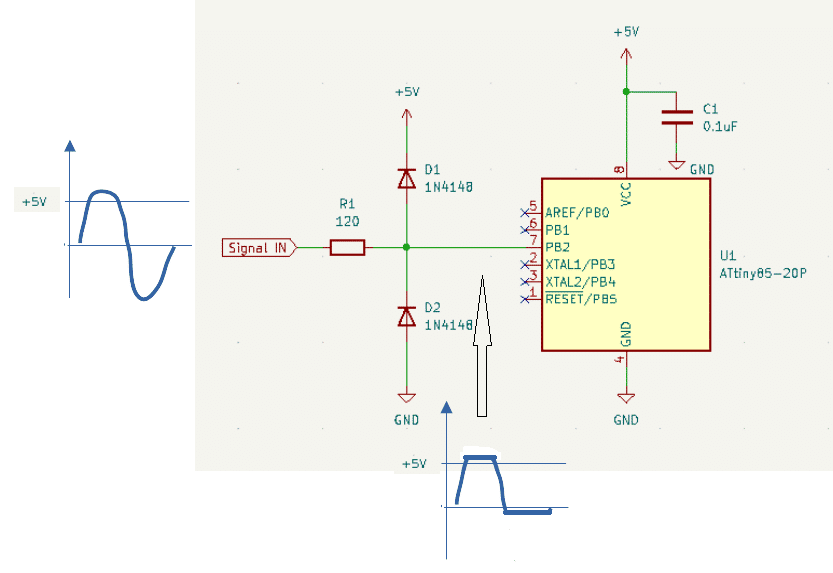
Here, an input signal whose value is above the MCU’s power supply rails (which is also the ADC reference) is injected into the ADC. You’ll see this signal rise above +5V and fall below ground. Ideally, the diode protection circuit should clip the excess voltages that exceed the ADC’s or MCU’s limits. With this, the resulting waveform should look like the lower waveform above.
Note that the excess negative voltage of the upper waveform will find a path from ground through diode D2. Additionally, this excess is absorbed through resistor R1 thereby protecting your signal source.
The excess positive voltage of waveform A will find a path to the +5V supply and is also absorbed through R1. However, most power sources are not ideal and may not be able to sink current. Ideal power sources have an internal resistance that should take care of this. However, practical power supplies may eventually break with large excess positive voltages coming from the ADC input. Some people may add protection zener diodes on the +5V line (usually with a value of 5.6V) and this is an alternative approach to protect your MCU. Note that your MCU may become unstable if this scenario is not handled well.
A TRANSISTOR-BASED active shunt ADC Input Protection Circuit
A transistor-based solution is available for the issue mentioned above. It’s called a transistor clipper active shunt circuit. This circuit clips excess voltages from your ADC’s input (both the positive and negative components) and shunts them all to ground.
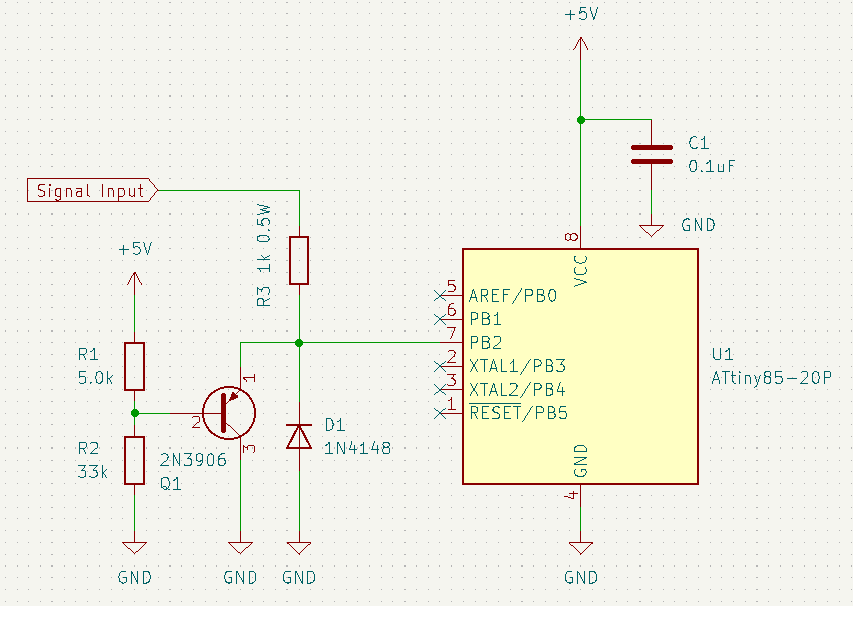
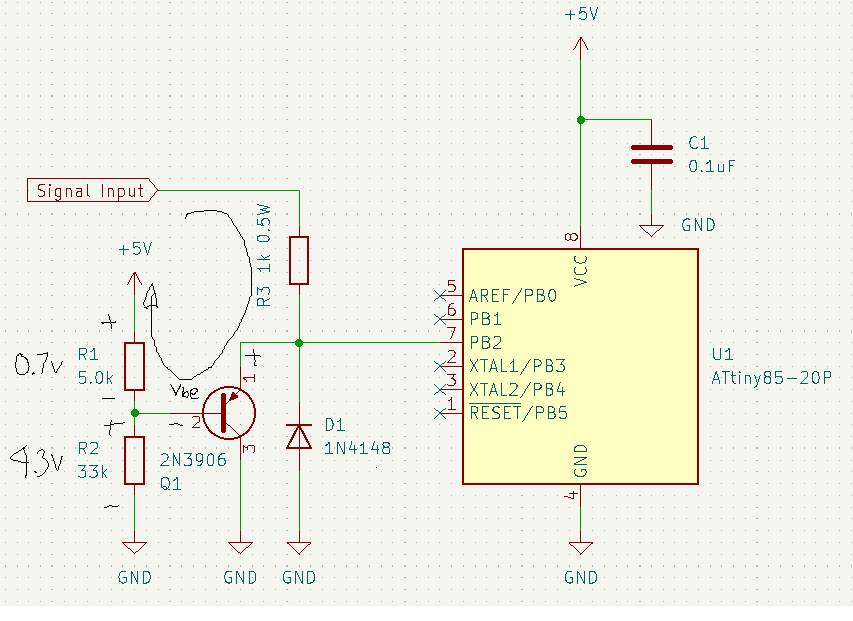
In the circuit above, diode D1 will act as a clamper when a negative voltage appears on the ADC input. This is the same scenario as what the series diode clamper does. There will be a current path sourced from ground and resistor R3 will absorb the excess energy generated.
When a positive overvoltage happens on the input, the excess power is actually shunted away to ground. This happens because transistor Q1 turns on. Q1 turns on approximately when the input signal reaches 5V or more (it can actually be programmed). If you do a KVL (Kirchoff’s Voltage Law) on the Vbe loop of the transistor, you’ll see your ADC input signal should limit itself to the sum of the voltages across VR1, Vbe, and your supply voltage. Anything in excess will trigger Q1 to turn on. In this example, the value of the voltage divider at VR2 is set to be the supply voltage minus Vbe (4.35V). You can alternatively program your clipping level by varying R1 and R2. If you want more clipping headroom, choose a transistor with a large Vce breakdown voltage.
You don’t need to worry about your power supply’s positive terminal sinking current anymore when using this kind of circuit.




